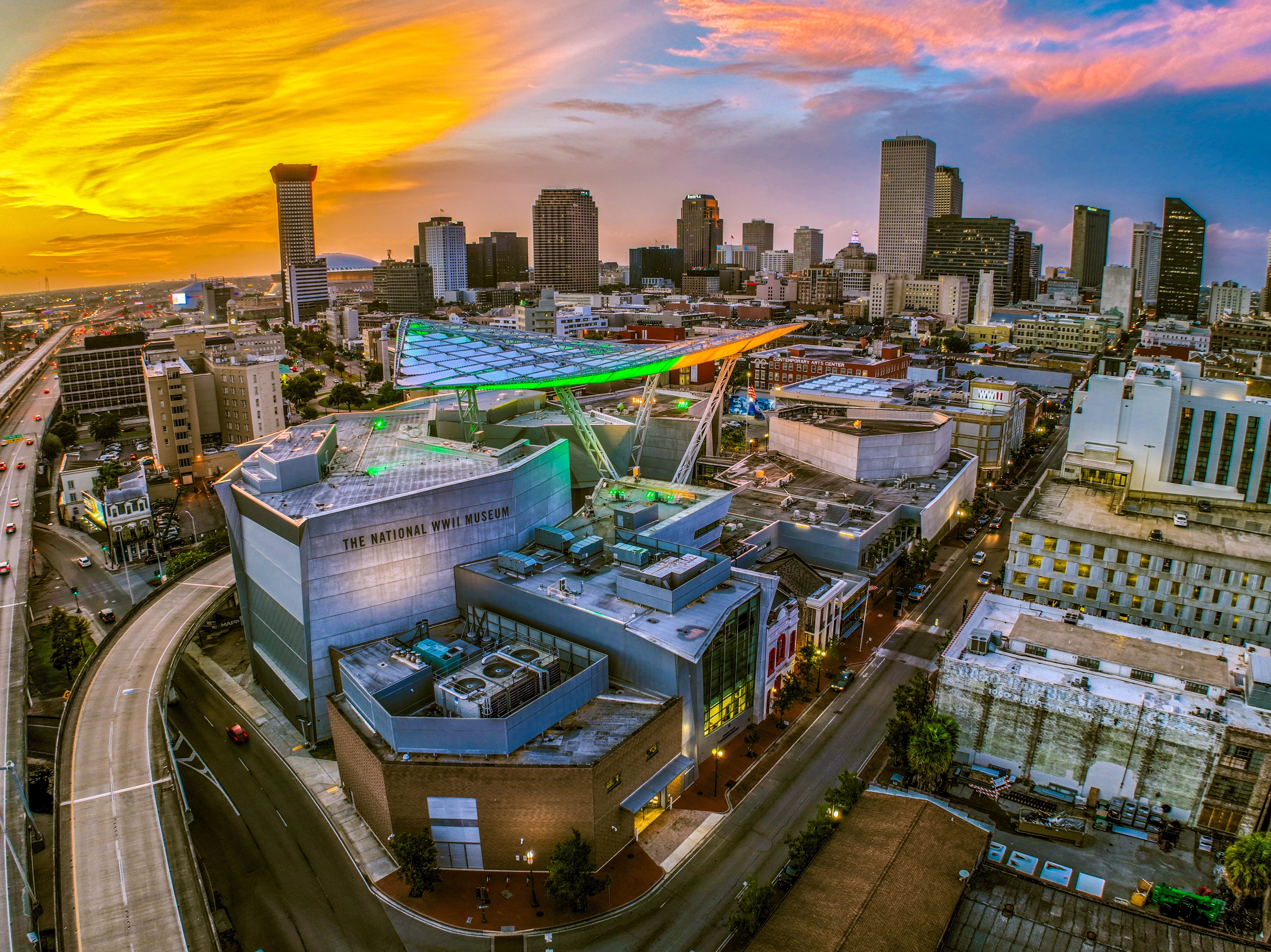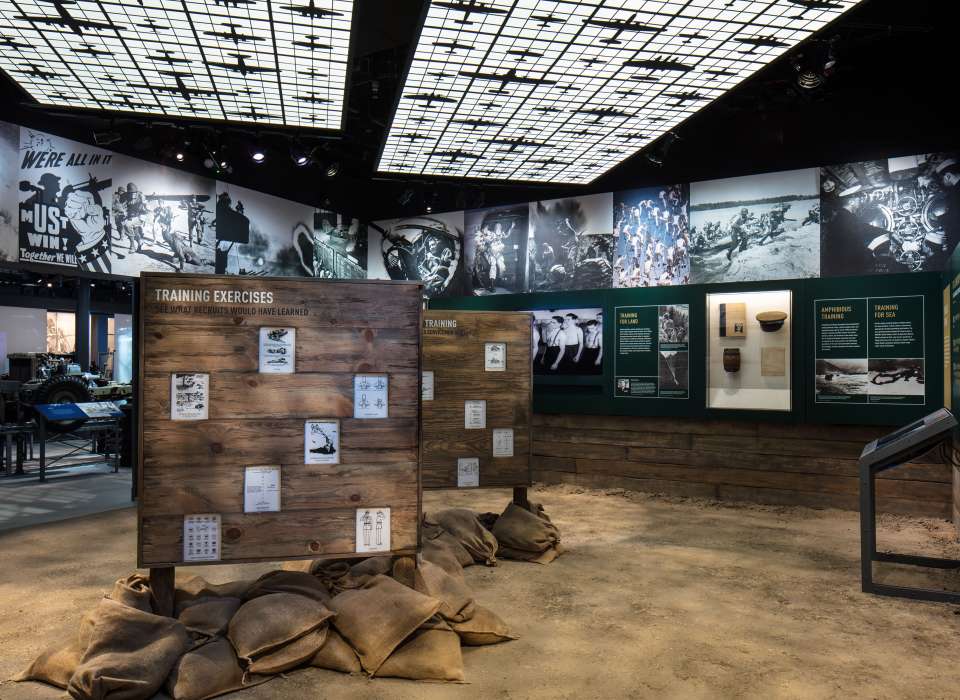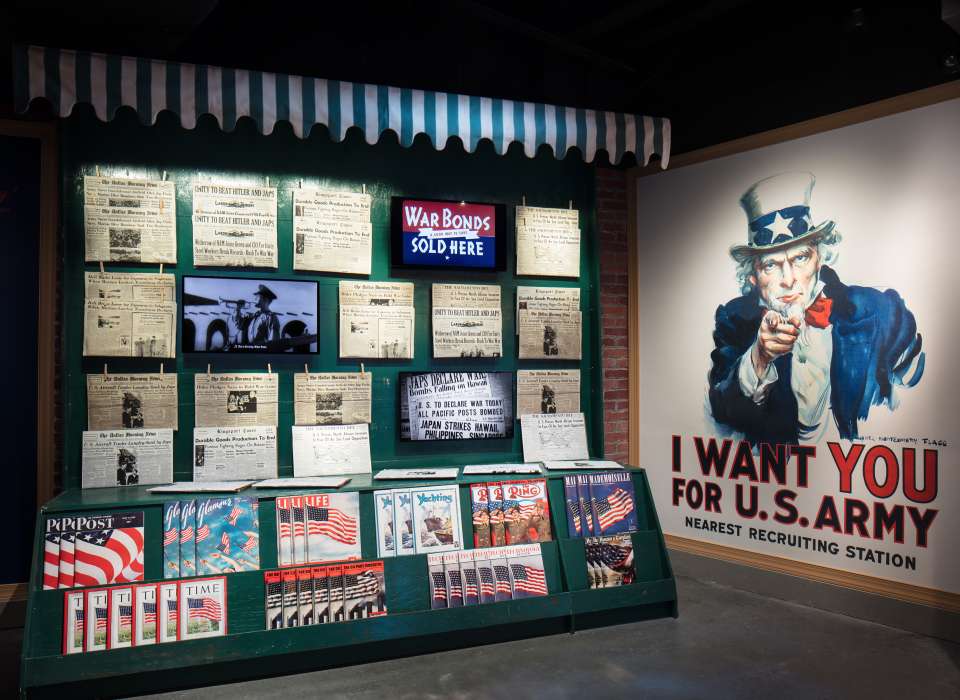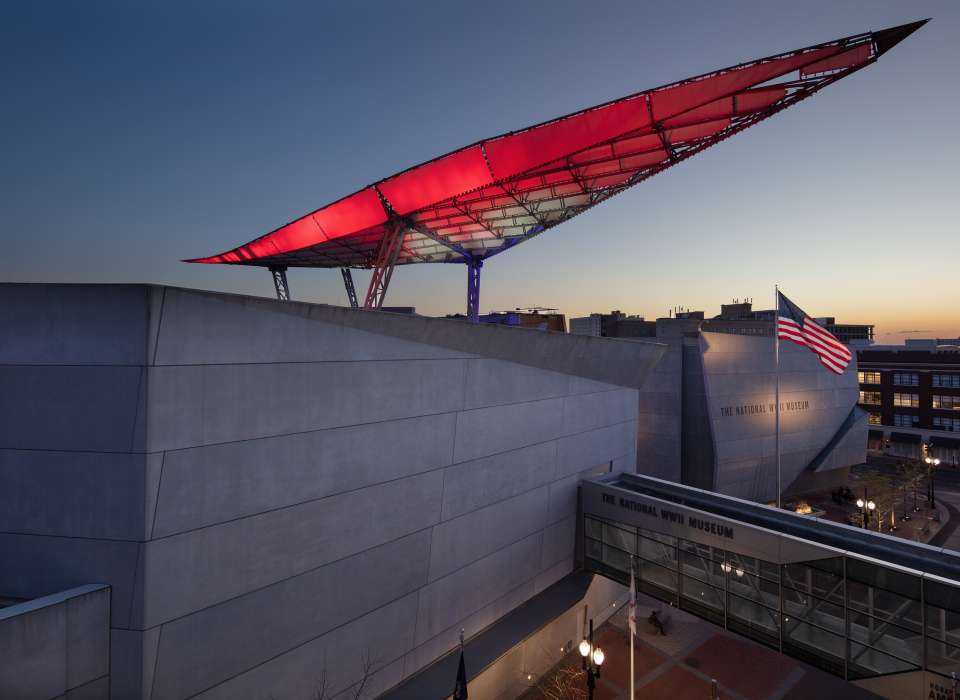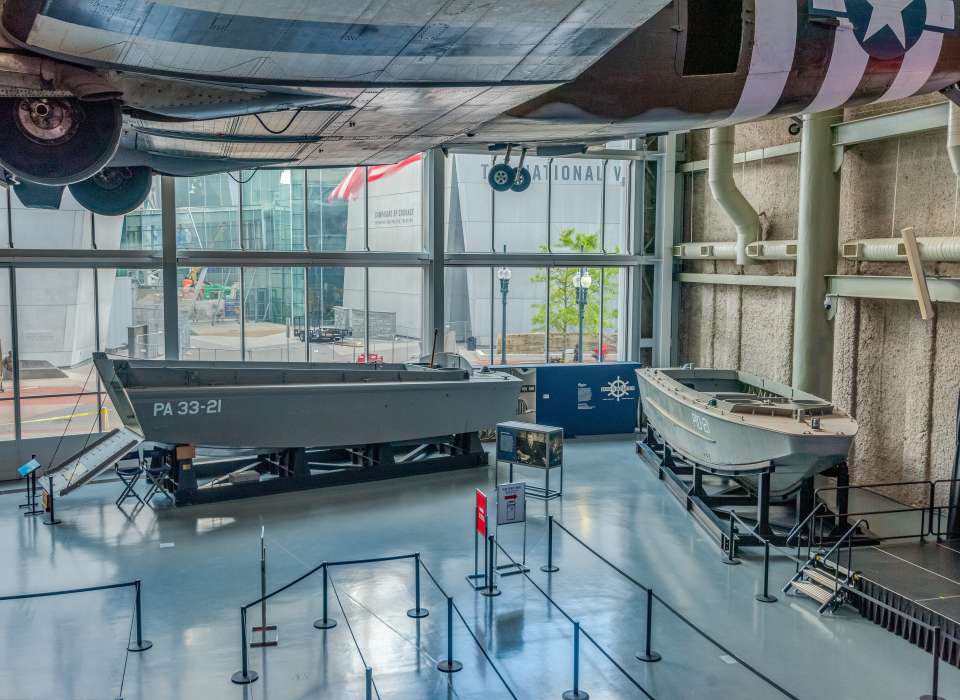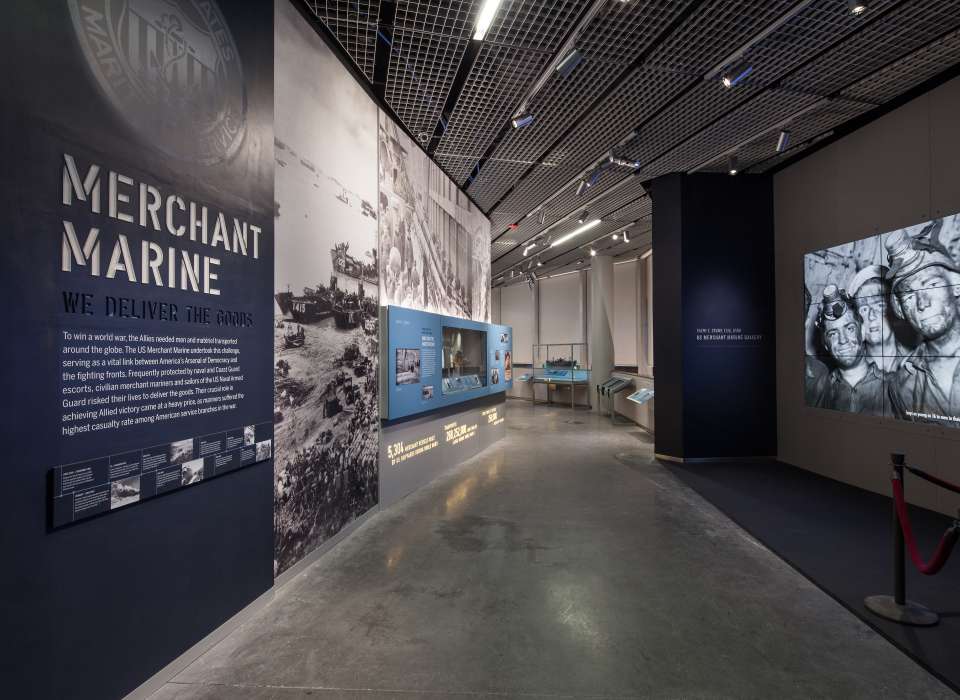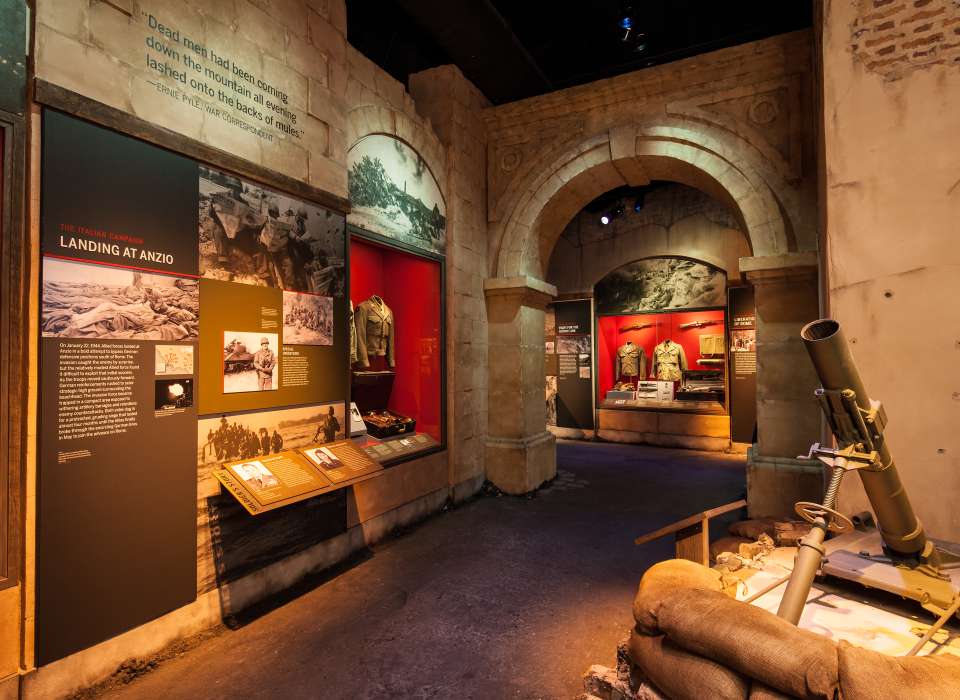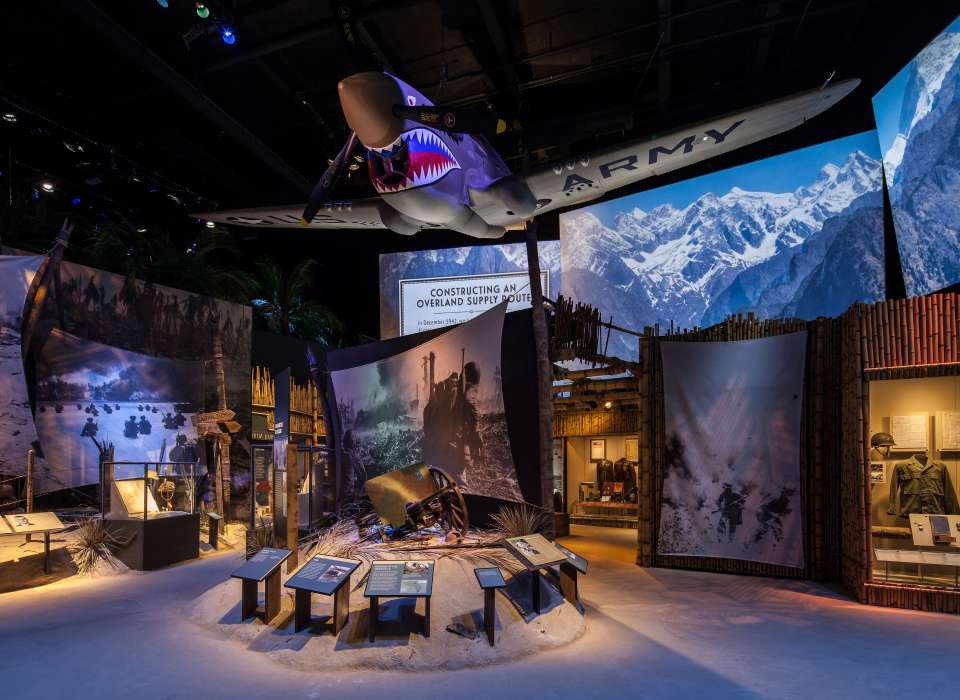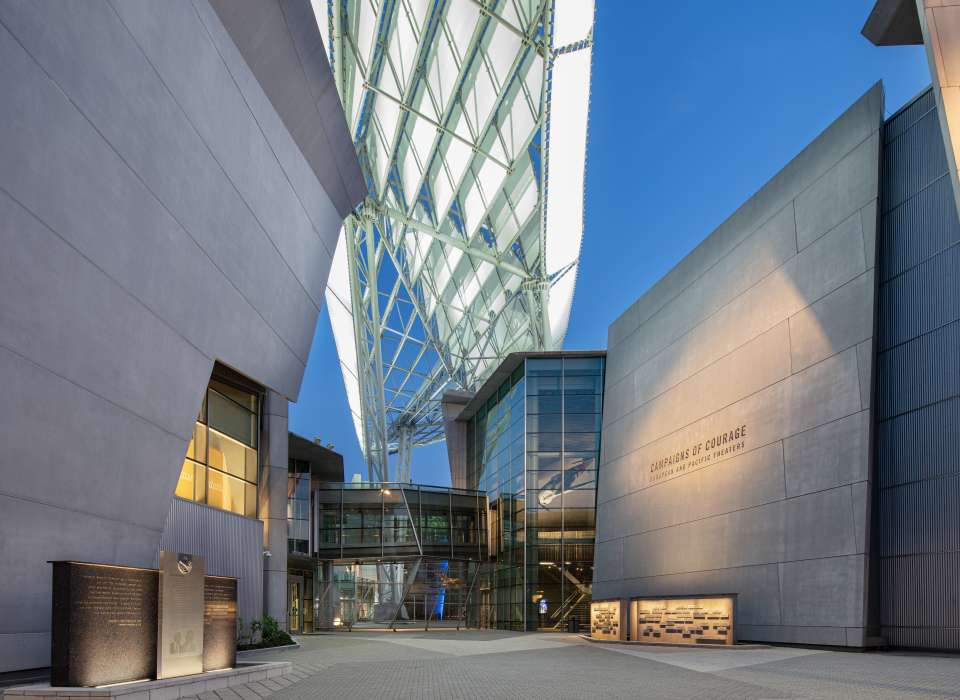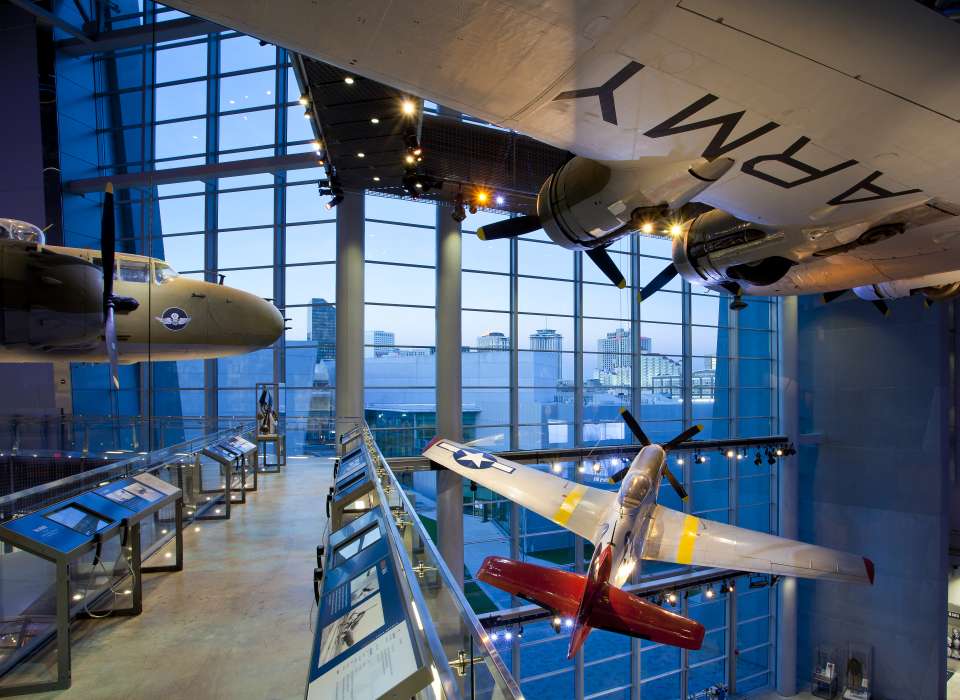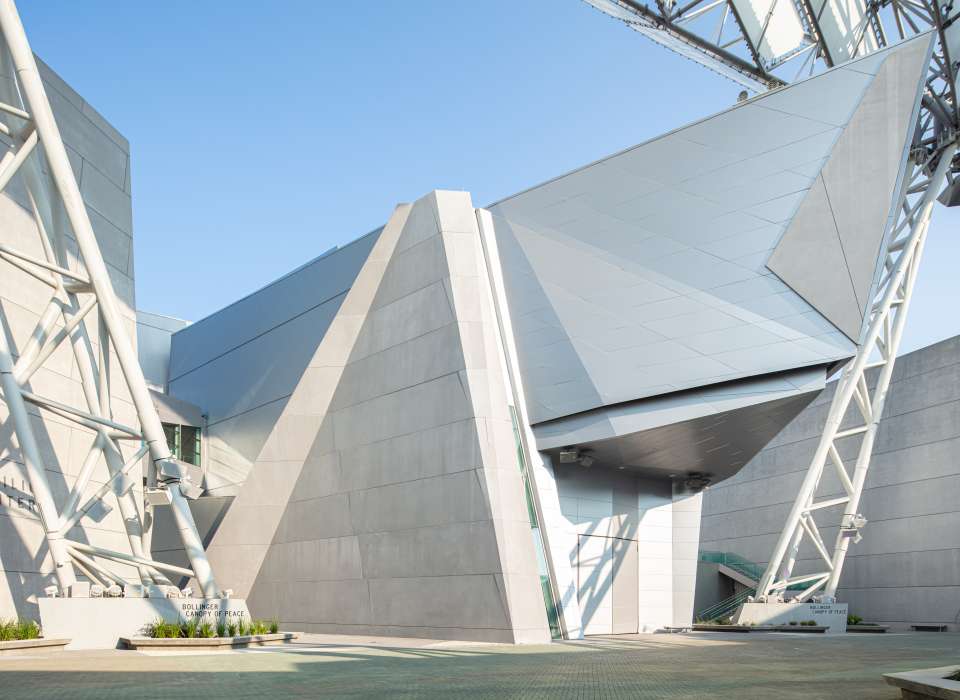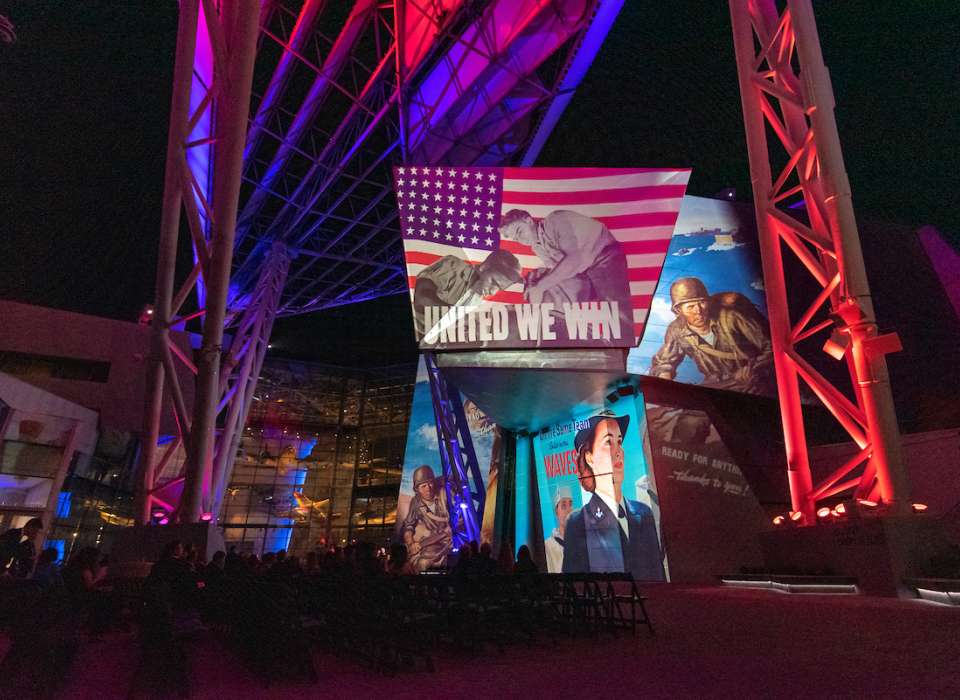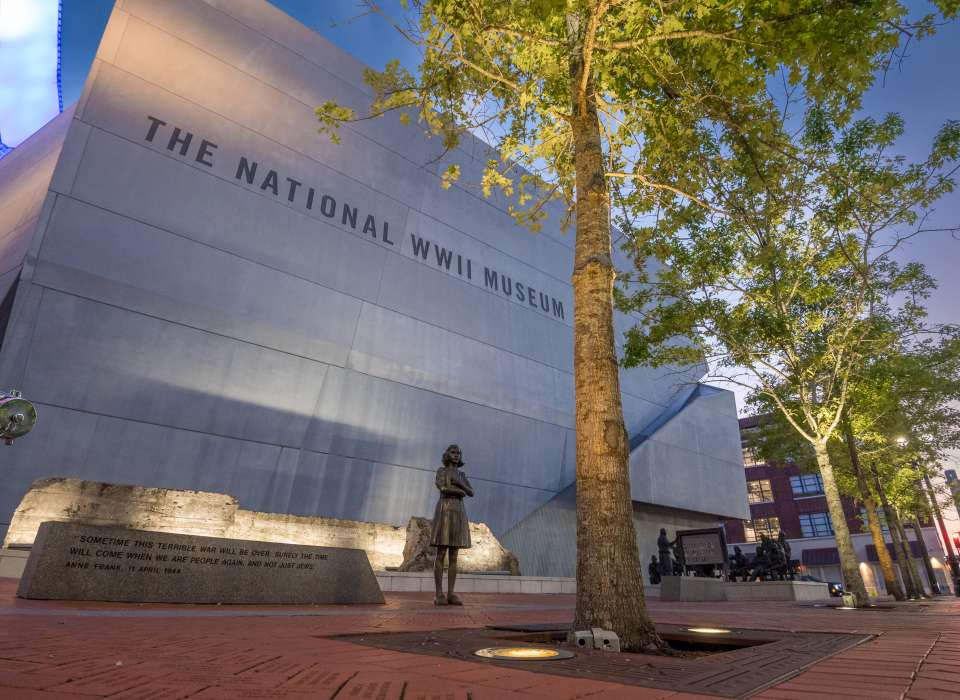High Resolution Images
Click on an image below to download a high resolution file. Don’t see the image you are looking for? Contact us with your specific request. Please specify your publication and deadline.
Please credit all images "Courtesy of The National WWII Museum."
Arsenal of Democracy
On the second floor of Louisiana Memorial Pavilion, The Arsenal of Democracy: The Herman and George R. Brown Salute to the Home Front tells the story of the road to war and the Home Front, drawing on personal narratives and evocative artifacts to highlight different facets of WWII-era American life. Through multimedia and interactive displays as well as artifacts and oral histories from the Museum’s extensive collections, The Arsenal of Democracy allows visitors to connect with the men and women who mobilized to fight the war.
Set in a military barracks environment, the Citizens to Warriors gallery highlights the massive effort to rapidly train and mobilize millions of civilians to become the nation’s troops in combat zones around the world. But not all citizen soldiers’ experiences were alike: women, African Americans, and Japanese Americans all served in segregated units.
Arsenal of Democracy
As the United States entered World War II, enlistments in the military soared as the nation rallied around the war effort. The America Responds gallery conveys how the onset of World War II unified the country and demonstrates how war news was witnessed on every Main Street.
Bollinger Canopy of Peace
Rising nearly 150 feet above The National WWII Museum, the Bollinger Canopy of Peace’s bold design visually unifies the Museum’s architecturally distinctive campus while reflecting the significance of the Museum’s mission, symbolizing the values that the WWII generation fought for, the sacrifices they made, and the peace, optimism, and hope they ultimately won for our country.
Louisiana Memorial Pavilion Higgins Boat
The National WWII Museum’s Louisiana Memorial Pavilion is home to a replica LCVP (Landing Craft, Vehicle, Personnel) made using original Higgins Industries drawings and plans. Built primarily by New Orleans firm Higgins Industries, the LCVP, or “Higgins Boat,” was instrumental to the Allied war effort, used as the primary assault craft during the D-Day landings in Normandy.
Merchant Marine Gallery
The Ralph E. Crump, LTJG, USNR US Merchant Marine Gallery honors the Merchant Mariners who risked their lives transporting weapons, men, and material to US troops overseas. Through video, artifacts, a model of a Liberty ship, and an engaging array of personal narratives, this exhibit tells their story, including impressive logistical feats, tales of constant danger, and the role of this hardworking group in transporting 7.3 million American soldiers to battle zones across the oceans and continents of the world. This standalone gallery is situated at the end of the Horatio Alger Association American Spirit Bridge on the second floor of the Solomon Victory Theater complex.
Road to Berlin
On the first floor of the Campaigns of Courage pavilion, The Duchossois Family Road to Berlin: European Theater Galleries immerses visitors in America’s story of the war in Europe, Africa, and the Mediterranean through lifelike re-creations of battle settings and villages that serve as a backdrop for macro-artifacts, dynamic displays, video histories, and personal artifacts that dive deeper into history and provide a touching perspective on the human cost of the war. From the faltering first battles in North Africa to the bloody struggle at Germany’s doorstep, the exhibit offers a richly layered, multimedia experience that brings to life the drama, sacrifices, stories, and strategies of America’s campaign to defeat the Axis powers and preserve freedom.
Featuring five major exhibits—Invasion of the Italian Peninsula, Fighting up the Peninsula, Anzio, Liberation of Rome, and Fight for the Gothic Line—The Italian Campaign gallery tells the story of the Allies’ mainland assault on Italy, which turned into a hard, deadly slog over many months. Visitors hear about soldiers’ experiences in their own words through oral histories, which recount battles and everyday life in the war. The exhibits communicate both the broad strategic complexity of warfare and the individual bravery and leadership of the servicemembers who took part in it.
Road to Tokyo
On the second floor of the Campaigns of Courage pavilion, The Richard C. Adkerson & Freeport-McMoRan Foundation Road to Tokyo: Pacific Theater Galleries retraces the grueling path that led from Pearl Harbor to Tokyo Bay, highlighting critical naval warfare as well as air and land campaigns throughout Asia and the Pacific. Exhibits explore the evolving strategy for fighting relentless Japanese forces in Asia and the Pacific, examining cultural differences, logistical challenges, and the staggering range of extreme conditions that confronted American military forces. Immersive environments, personal and macro-artifacts, oral histories, and short films tell the story of the Americans who, through courage, ingenuity, and great sacrifice, forged a road to end the war at last.
Beneath a restored P-40 Warhawk fighter plane, the Island Hopping: Footholds Across the Pacific gallery re-creates a landing site on the island of Tarawa to illustrate the “island-hopping” strategy that targeted key islands to capture and equip with airstrips, gradually bringing B-29 bombers—backed by naval and ground forces—within range of the enemy homeland. Other exhibits describe the integrated efforts of land, sea, and air forces, as well as successes in intelligence, technology, and carrier warfare in the fight for control of the skies. The adjacent China-Burma-India: The Pacific War’s Second Front gallery explores the critical strategic importance of that theater: while 11 Japanese army divisions battled US forces on the Pacific islands, a staggering 40 more Japanese divisions were tied up trying to subdue American allies in the China-Burma-India theater.
The National WWII Museum Campaigns of Courage
The 32,512-square-foot Campaigns of Courage: European and Pacific Theaters pavilion houses the immersive Road to Berlin and Road to Tokyo exhibits, bringing visitors inside the story of how the war was won in each theater of combat using a sophisticated mix of set design, period newsreels, virtual missions, interactive oral history stations, digital artifacts, and dynamic displays for a uniquely evocative experience.
US Freedom Pavilion Interior
US Freedom Pavilion: The Boeing Center honors the innovations of American manufacturers who responded to wartime demands, showcasing fully restored iconic bombers and other warbirds in the George H.W. Bush Aviation Gallery as well as tanks and weapons that demonstrated America’s capacity to project power around the globe in pivotal air, land, and naval campaigns.
Liberation Pavilion Exterior
The National WWII Museum’s capstone exhibit hall, Liberation Pavilion, explores the end of World War II, the Holocaust, the postwar years, and how the war continues to impact our lives today. The three-story pavilion houses two floors of exhibit space featuring first-person accounts, iconic imagery, powerful artifacts, and immersive environments, as well as a third-floor theater offering a brand-new cinematic experience.
Expressions of America
Music, art, and personal reflections of the 1940s bring history to life on a grand scale at Expressions of America, The National WWII Museum’s outdoor sound and light show. Stunning visuals projected 90 feet tall transform the exterior of the Museum’s buildings as actor Gary Sinise narrates an inspiring glimpse into what life was like for the men and women who served our country in every way imaginable. This nighttime spectacular for all ages combines cutting-edge technology with the real words of the WWII generation to present an experience like no other.
Museum Exterior
Founders Plaza creates an impressive entryway to the Museum campus and a pleasant outdoor setting for rest and reflection. Throughout the plaza, as throughout the Museum campus, more than 11,000 Road to Victory Bricks honor servicemembers and loved ones with permanent memorials. Popular elements include bronze statues of President Franklin Delano Roosevelt and Holocaust victim Anne Frank, as well as monuments to the founders of the Museum and to fallen American airmen of World War II.
